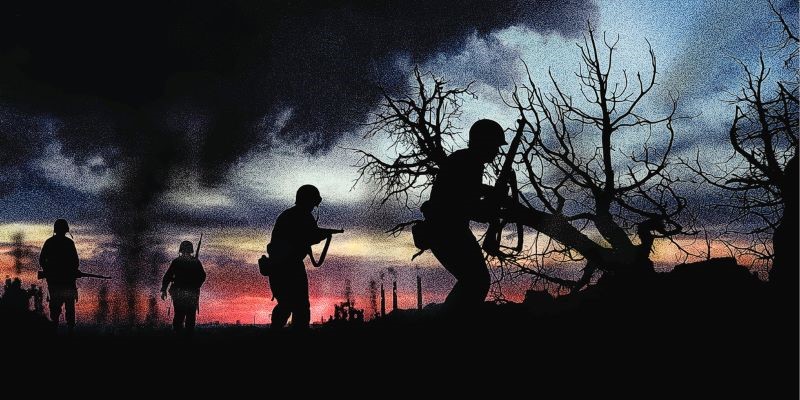| By J. Robert Parks |
The Korean War is sometimes called the Forgotten War, given that it followed soon after World War II and was overshadowed by the Vietnam War a decade later. It probably doesn’t help that even U.S. history classes tend to gloss over the Korean War given its unresolved ending and the importance of other historical events such as the civil rights movement. Nonetheless, the Korean War is important for the history of the Cold War, U.S.-China relations, the early years of the United Nations, and of course Korea itself. Teachers and librarians looking to shed more light on this overlooked world event, which began 75 years ago this week, will find plenty of resources in Gale In Context: World History.
The victory parades celebrating the end of World War II were barely over when the Cold War divided the world between the capitalist West, led by the United States, and the communist Soviet bloc, led by the Soviet Union. That division manifested itself in new borders in places like Germany and Korea. Korea had been annexed by Japan in 1910, and after Japan’s defeat, a supposedly temporary partition along the 38th parallel divided the country into the Soviet-occupied north and the U.S.-occupied south.
The newly formed United Nations arranged an election for a new Korean government in 1948, but the only people who voted lived in the south, and the new Korean National Assembly chose Syngman Rhee as its leader. Meanwhile, the north held its own election, and the guerrilla leader Kim Il Sung was elected premier. Both leaders attempted to consolidate power with the intention of invading the other side and unifying the country. Meanwhile, both the United States and the Soviet Union withdrew the vast majority of their troops, neither seeing Korea as a vital interest.
Two things changed between 1948 and 1950: the Cold War heated up as the Soviet Union dropped its own atomic bomb, and the communists in China defeated the Nationalists. Both events led to a surge in anti-communist fervor in the United States, and President Harry Truman was accused of having “lost China.” Nonetheless, even as border clashes between North and South Korean forces began in 1949, the United States didn’t anticipate a larger war.
That changed on June 25, 1950, when North Korean forces launched a surprise attack against the South. Not wanting to be accused of “losing” Korea, too, Truman quickly redeployed U.S. forces from Japan to stop the South Korean forces from being completely overrun. Much of the South Korean army had been pushed south to Pusan, but the entrance of U.S. forces quickly countered the momentum.
The Chinese government saw North Korea as a fellow communist ally, but it might not have entered the war without the U.S. involvement. China’s army was large, but it was not advanced, and the communists were more focused on establishing communism across China and rebuilding their country. The thought of having the forces of an antagonistic United States on the Chinese border, however, was not one Mao Tse-tung was willing to tolerate, and he rushed Chinese forces to support North Korea.
With both China and the United States committing hundreds of thousands of troops to fight in a difficult mountainous terrain, the war was largely a stalemate for three years. Despite (or maybe because of) the lack of progress by either side, casualties on both sides were high. Including civilians, an estimated 3 million people were killed, making it one of the deadliest wars since World War II. Negotiations to end the war began in 1951, but they did not conclude until July 27, 1953, when an armistice was signed. Even then, that was just a cessation of fighting. No peace treaty between North and South Korea has ever been signed, and its border remains one of the most militarized in the world. That border is the same border that existed before the war began: the 38th parallel.
After the war, South Korea went through a series of military dictatorships before finally becoming a stable democracy and an economic powerhouse. North Korea descended into a Kim-family-led totalitarian state that is, arguably, the most closed society in the world. As for the United States, the most lasting legacy of the Korean War might be a television show, M*A*S*H, that was set during the Korean War but was more a response to what was happening in the Vietnam War. Even in fiction, the Korean War was largely forgotten.
About the Author
J. Robert Parks is a former professor and frequent contributor to Gale InContext: U.S. History and Gale In Context: World History who enjoys thinking about how our understanding of history affects and reflects contemporary culture.


